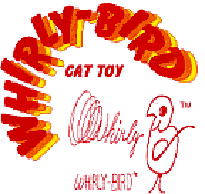 I jumped up and tried to grab it, but it ran into this rabbit brush bush.
I jumped up and tried to grab it, but it ran into this rabbit brush bush. Then it ran under Dad's gazebo to the inside and got away. Darn. Since I'm still working on my MzD, I thought I'd better study up on western fence lizards. Here at thirteen cool facts about western fence lizards.
Then it ran under Dad's gazebo to the inside and got away. Darn. Since I'm still working on my MzD, I thought I'd better study up on western fence lizards. Here at thirteen cool facts about western fence lizards.1. This is the Great Basin Fence Lizard, scientific name Sceloporus occidentalis longipes.
2. Western fence lizards are about 8-10 cm long excluding their tail, and about 15 cm long with the tail included.
3. They are brown to black in color (the brown may be sandy or greenish).
4. Adult males have iridescent blue lateral patches on their flanks, and their entire bodies may be flecked with blue. The blue color is much less noticeable in females and juveniles.
5. The blue stomach of the male is used in a territorial display. They are commonly called blue-bellies and the males are often seen displaying to attract females or drive off male intruders; it bobs its head and flattens its sides, showing off the blue patches.
6. The western fence lizard eats insects and spiders.
7. They are commonly seen sunning themselves on paths and rocks. I find them easily in bushes in the rocks. They are easy prey to birds and snakes (and princess meezers).
8. It is thought that the presence of western fence lizards diminishes the danger of transmission of Lyme disease by ticks.
9. They mate in early spring and produce a single clutch of 3-14 eggs, laid May to July, which hatch in July to September. That means the next time I go up, there should be baby lizards to chase!
10. They are found from Idaho south through Nevada and west to the Pacific coast.
11. They occur in rocky and mixed forest areas from sea level to above 9,000' (2,700 m).
12. They adapt to a wide variety of conditions but not to desert and frequents stone fences, fence posts, old buildings (and bushes!!!).
13. They are diurnal (out during the day) and easily encountered and may be observed even in midwinter on mild days.
And I must say, they are a blast to chase! I've had a few in my paws, but they slither away so fast!






















17 comments:
Wow, thanks for sharing those fascinating facts about fence lizards! Very cool!
My mom says she's jealous of your dad's hot tub.
Bakc to da rabbit brush...where's da rabbit?
It is very fun to learn all about lizards. We do not have any of those blue-bellies here. They seem to all be white bellies. Thanks for the interesting lesson!
Tara
Those lizards don't look anything like Flordia lizards. Although I have seen some blue lizards around here, Momma doesn't call em lizards though...it's somethink like Skeenk...I don't know what she is mumbling. But they is blue with stripes and taste furry bad.
Fanks for the lesson on the mountain lizard! I am still looking for that rabbit though.
~Abby
Thank yoo fur sharing about da lizzerd, we don't haf any here so we hafta lern about deze things from yoo and Daisy. Now, wheres da rabbit in dat bush?
Very cool! I love seeing interesting creatures from all over because we don't have any lizards here.
Kaze
Too bad they don't eat baby Kavans!
Lizard 101. We didn't realize that there was more than one kind of lizard and that they don't all live in Florida. Thanks for the information.
Your FL furiends,
Samantha & Tigger
Hi tara! Those are 13 interesting facts about your lizzie friend. I have nominated youz fur a Rockin Girl Blogger. My sisfer Pounce let me add it to her post today...Sia
I WANNA LIZARD! Efurryone else gots lizards. I want one of mine own.
Wow, we really love your lizzards. Ariel nominates Tara for the rockin' girl bloggers. Come on over to our blog and see.
Wow that's really interesting.
Hmm ... a furry scholarly treatise on local lizardry. You get an A+, Miss Tara.
DMM
I likes to chase lizards too! But my mama won't let me cuz they could be snakes in disguise. bummer.
- Daisy
Hmm, there sure are a lot of cats that like lizards. That's one type of wildlife we've never encountered. Good luck with your lizard hunting, Tara.
~J&B
I found your TT on the Western fence lizard very interesting. The description matches a lizard I see here in the mountains of New Mexico very closely, especially the blue patches on the sides of the belly, but we are farther south than the range you listed. I wonder if the blue-bellies here are a differnt kind.
That's very interesting! We have never seen a blueish lizard!!!
Luf, Us
Post a Comment